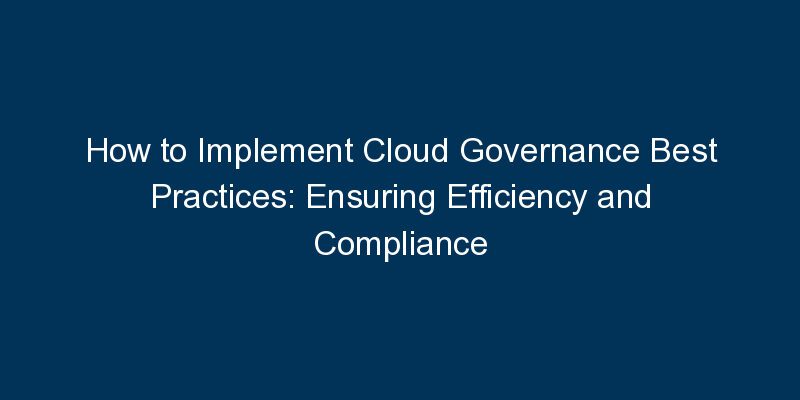Cloud governance is vital for organizations leveraging cloud services to ensure efficiency, security, and compliance. This blog provides a comprehensive guide on how to implement cloud governance best practices, empowering businesses to harness the full potential of cloud computing while mitigating risks.
Introduction:
As organizations increasingly migrate to the cloud, effective cloud governance becomes essential for managing resources, ensuring security, and adhering to regulatory requirements. This guide explores the key steps involved in implementing cloud governance best practices for optimal cloud utilization.
Key Steps to Implement Cloud Governance Best Practices:
- Define Cloud Governance Objectives: Clearly define the objectives of your cloud governance strategy. Whether it’s cost optimization, security enhancement, or regulatory compliance, understanding your goals is crucial.
- Establish Cloud Policies and Standards: Develop comprehensive cloud policies and standards. These should cover aspects such as data security, access controls, resource provisioning, and compliance with industry regulations.
- Role-Based Access Control (RBAC): Implement RBAC to control access to cloud resources based on job roles. Assign permissions at a granular level to ensure that users have the necessary access without compromising security.
- Continuous Monitoring and Compliance Checks: Implement continuous monitoring of cloud resources to identify security vulnerabilities and ensure compliance with established policies. Utilize automated tools for real-time alerts and remediation.
- Cost Management and Optimization: Implement cost management practices to optimize cloud spending. This includes monitoring usage patterns, identifying unused resources, and leveraging reserved instances for cost savings.
- Cloud Resource Tagging: Enforce a tagging strategy for cloud resources. Tags provide metadata that can be used for tracking costs, identifying ownership, and organizing resources based on various criteria.
Conclusion:
Implementing cloud governance best practices is crucial for organizations leveraging cloud services. By following the steps outlined in this guide, businesses can establish a robust cloud governance framework that ensures efficiency, security, and compliance in their cloud environments.






















Comments